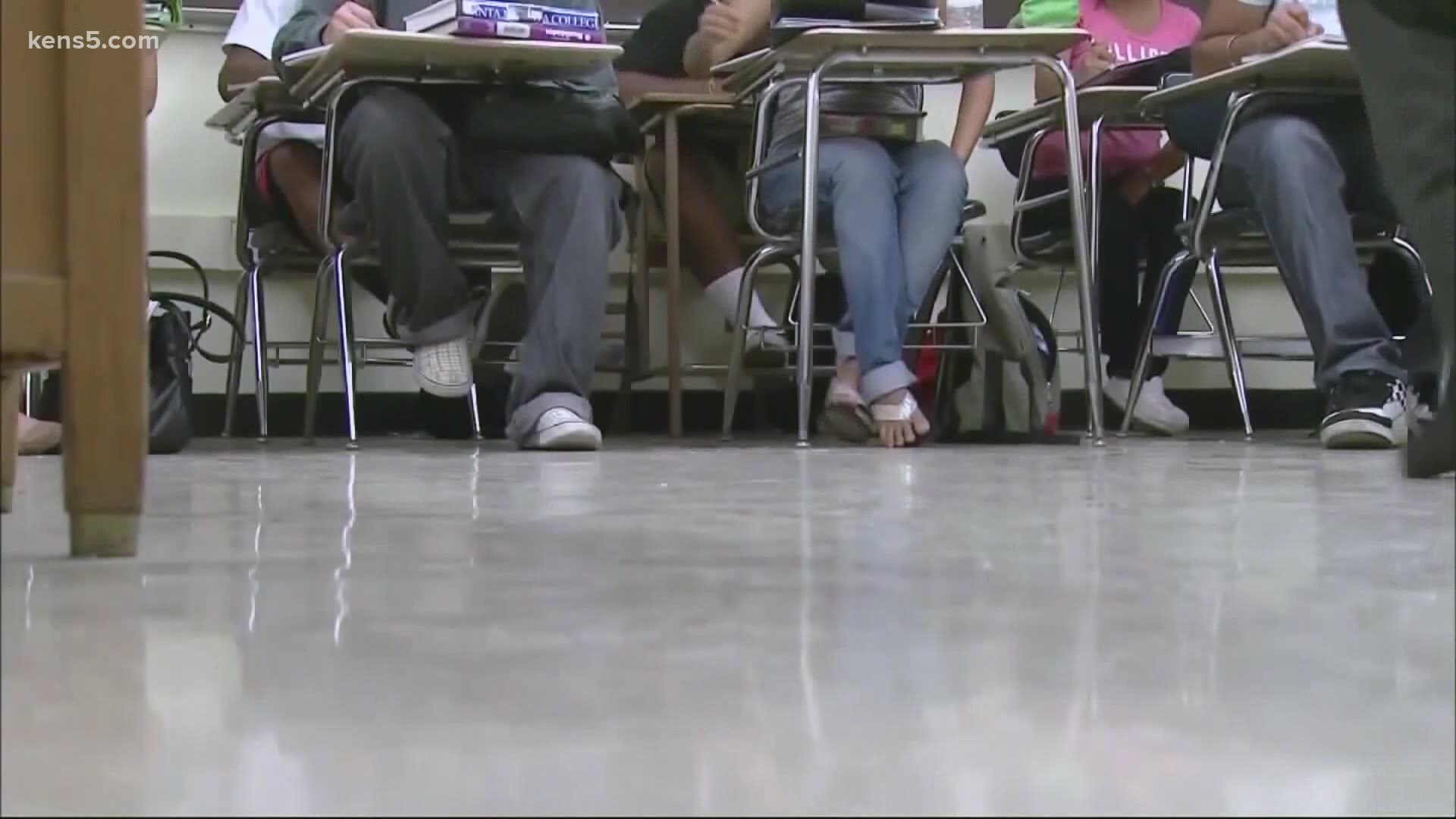SAN ANTONIO — We're tracking the latest numbers from the coronavirus pandemic in San Antonio and across Texas. Here are the latest numbers reported by Bexar and surrounding counties:
- Bexar County: 232 new cases were reported Saturday, bringing the total number for the county to 42,531. The county death toll, meanwhile, rose to 432 after 10 additional fatalities were reported.
- Comal County: The county reported 46 new cases on Friday while its death toll remained at 60. There have been a total of 2,359 cases of COVID-19 in the county. County officials say there are 449 active coronavirus cases, and 1,850 residents have recovered.
- Hays County: Officials in Hays County on Friday reported 23 new cases in the county and no additional virus-related deaths. As of Friday evening, there were a total of 5,012 lab-confirmed cases in the county (2,803 of which were active) while the death toll stood at 34.
How Bexar County is trending
We're tracking how many coronavirus cases are confirmed in Bexar County each day from the time San Antonio Metro Health began reporting cases more than five months ago. Graphing those daily case numbers along a 14-day moving average provides an accurate picture of the curve in the San Antonio area and the direction we're heading amid the coronavirus.
On Saturday, Metro Health reported an additional 232 coronavirus cases in Bexar County, the lowest daily count since 136 cases were reported Tuesday. Metro Health also reported 10 additional fatalities from coronavirus-related complications.
In all, 42,531 Bexar County residents have been diagnosed with COVID-19, and 432 have died from it.

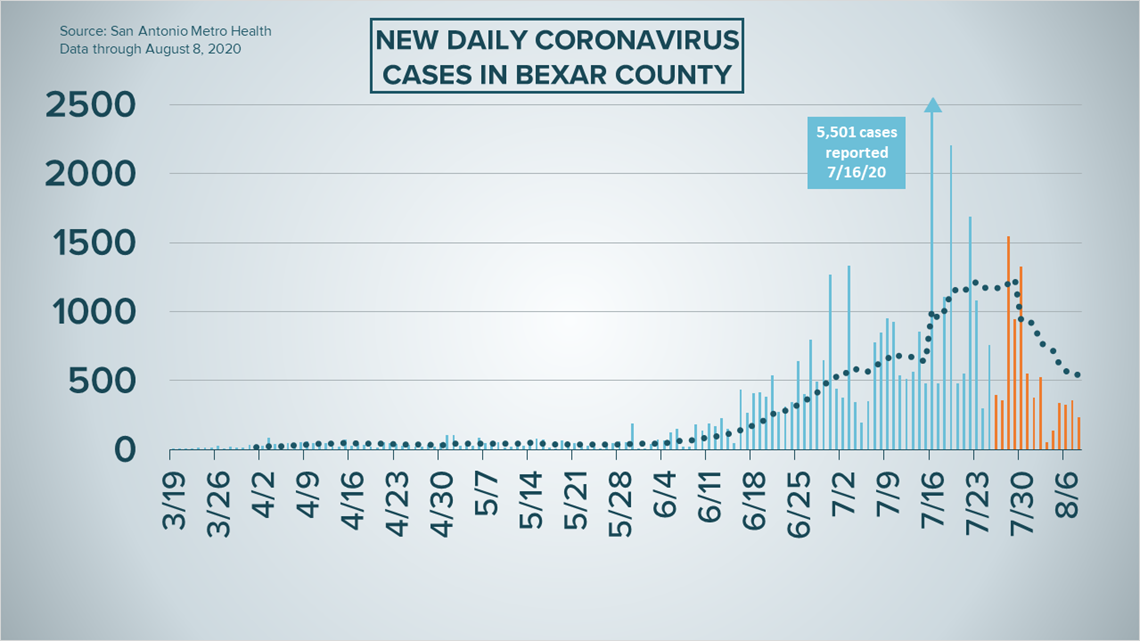
Hospitalizations in Bexar County continue to go down. The number of those receiving treatment for COVID-19 symptoms was 743 on Saturday, which is the lowest that number has been since June 27. Patients utilizing ventilators (229) and in intensive care (328) also went down on Saturday.

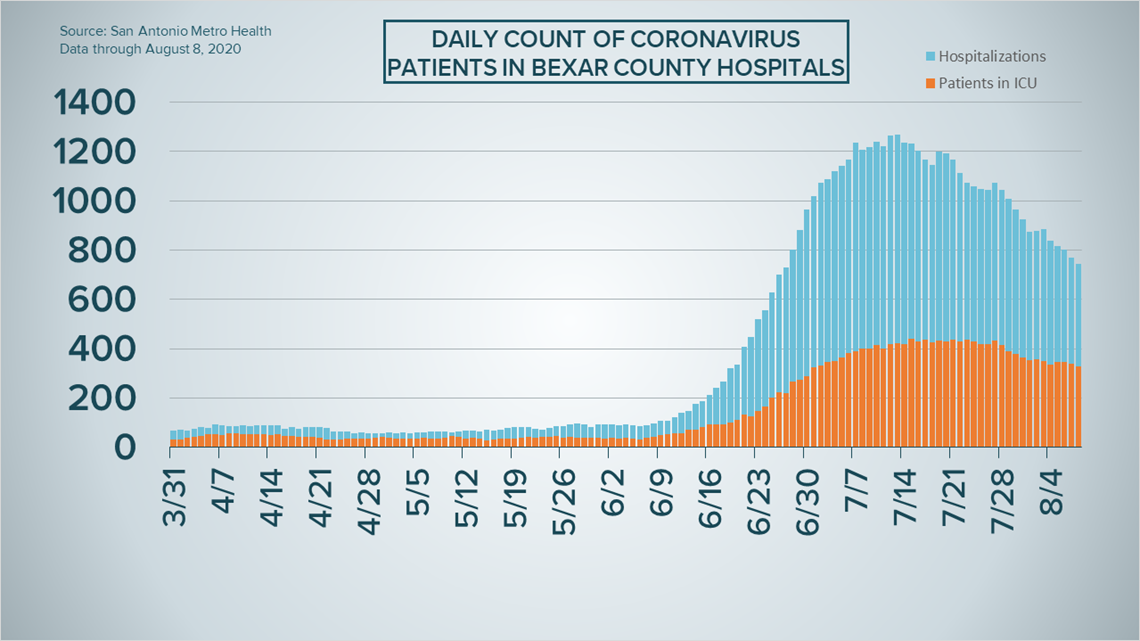
Coronavirus in Texas
Texas health authorities on Saturday reported an additional 6,959 new coronavirus cases from across the state. It's the lowest daily total reported since Monday, and represents the fifth straight day of lowering case counts.

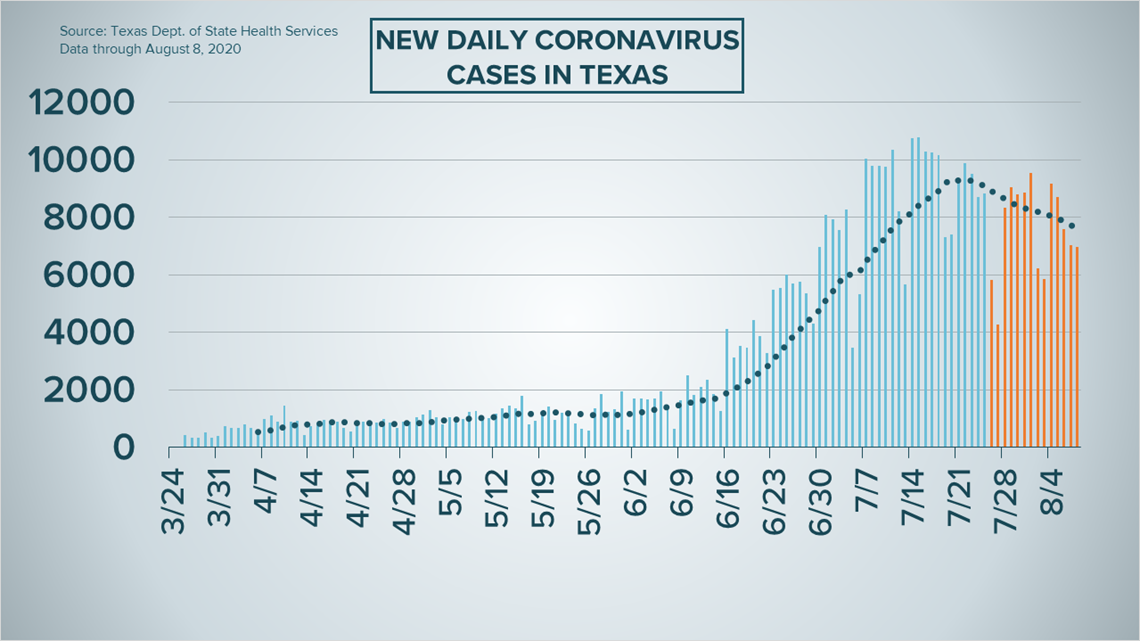
State health officials also reported an additional 247 virus-related fatalities on Saturday, nearly 50 fewer than Friday's figure. In all, 8,343 Texans have died from coronavirus complications.

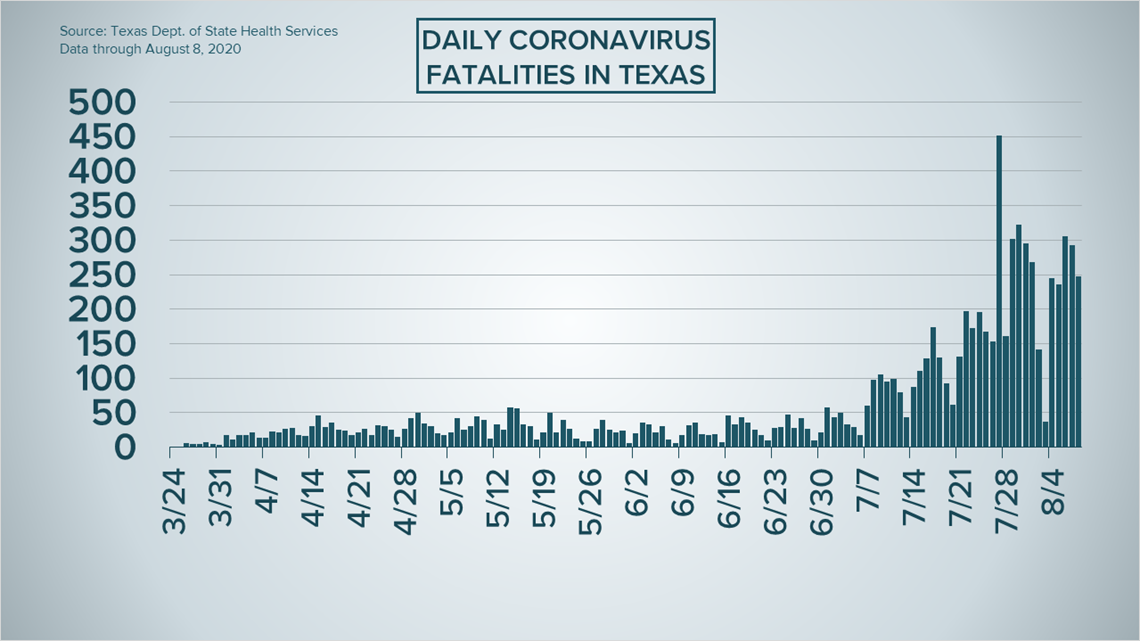
On a more positive note, hospitalizations in the state continue to trend downward. On Saturday, Texas reported that 7,872 Texans were receiving treatment for COVID-19 symptoms. That's nearly 200 fewer patients than were hospitalized on Friday; Saturday also marks the first time since July 4 that the number was under 8,000.
Latest Coronavirus Headlines
- Social media pandemic-shaming on the rise
- AG Paxton says local governments cannot extend eviction moratoriums in Texas
- Metro Health issues new guidance on in-person teaching, says Bexar County isn't ready yet
- Last-ditch coronavirus aid talks collapse; no help for jobless now
- US reports show racial disparities in children with COVID-19
- Model projects US could have nearly 300,000 coronavirus deaths by December
- As start of school nears, Bexar County is seeing more younger COVID-19 patients in hospitals
- Rescheduling a big life event due to the pandemic? Here are the costs you can expect
- 'We need a miracle' | Family of EISD secretary asks for prayers as she battles coronavirus
- 1.2 million seek unemployment after $600 federal check ends
Coronavirus symptoms
The symptoms of coronavirus can be similar to the flu or a bad cold. Symptoms include fever or chills, cough, shortness of breath or difficulty breathing, fatigue, muscle or body aches, headache, new loss of taste or smell sore throat, congestion or runny nose, nausea or vomiting and diarrhea, according to the Centers for Disease Control.
Most healthy people will have mild symptoms. A study of more than 72,000 patients by the Centers for Disease Control in China showed 80 percent of the cases there were mild.
But infections can cause pneumonia, severe acute respiratory syndrome, kidney failure, and even death, according to the World Health Organization. Older people with underlying health conditions are most at risk.
On June 25, the CDC expanded the list of groups at a higher risk of severe illness due to coronavirus.
Experts determined there was consistent evidence these conditions increase a person's risk, regardless of age:
- Chronic kidney disease
- COPD (chronic obstructive pulmonary disease)
- Obesity (BMI of 30 or higher)
- Immunocompromised state (weakened immune system) from solid organ transplant
- Serious heart conditions, such as heart failure, coronary artery disease, or cardiomyopathies
- Sickle cell disease
- Type 2 diabetes
The CDC believes symptoms may appear anywhere from two to 14 days after being exposed.
Human coronaviruses are usually spread...
- Between people who are in close contact with one another (within about 6 feet).
- Through respiratory droplets produced when an infected person coughs, sneezes or talks. These droplets can land in the mouths or noses of people who are nearby or possibly be inhaled into the lungs.
- Some recent studies have suggested that COVID-19 may be spread by people who are not showing symptoms.
Help stop the spread of coronavirus
- Stay home when you are sick.
- Eat and sleep separately from your family members
- Use different utensils and dishes
- Cover your cough or sneeze with your arm, not your hand.
- If you use a tissue, throw it in the trash.
Lower your risk
- Wash your hands often with soap and water for at least 20 seconds. If soap and water are not available, use an alcohol-based hand sanitizer.
- Avoid touching your eyes, nose, and mouth with unwashed hands.
- Avoid close contact with people who are sick.
- Clean and disinfect frequently touched objects and surfaces.
- The CDC recommends wearing a mask or cloth face covering if you have to be out due to an essential service or essential activity such as going to the grocery store.
- If you are 60 or over and have an underlying health condition such as cardiovascular disease, diabetes or respiratory illnesses like asthma or COPD, the World Health Organization advises you to try to avoid crowds or places where you might interact with people who are sick.

